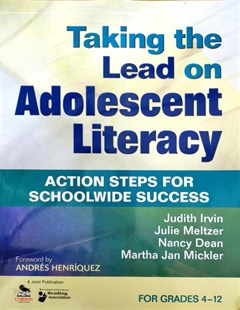Taking the lead on adolescent literacy : Action steps for schoolwide success
Administrators will find a user-friendly, five-stage planning process with six essential rubrics for developing, implementing, monitoring, and sustaining a successful literacy initiative for Grades 4–12.
2010
Administrators will find a user-friendly, five-stage planning process with six essential rubrics for developing, implementing, monitoring, and sustaining a successful literacy initiative for Grades 4–12.
"The most beneficial aspect of the literacy action planning process was providing training and asking for inputfrom teachersfrom the very beginning. Literacy Support Team Members were able to reflect on the unique and specific strengths and needs of their buildings and utilize this information to develop a practical implementation plan. The time spent working together on the Litemcy Action Plan helped to build community and foster a sense of ownership in the change process. Rather than being "acted upon" with a top-down initiative, staff members were an integral part of enacting change within their own learning environments andfor their own students. This was very powerful and a primary reason that all four secondary schools were able to launch the initiative so successfully
Judith L. Irvin. Taking the lead on adolescent literacy : Action steps for schoolwide success. Corwin Press, 2010
 |  |  |
| Taking the lead on adolescent literacy : Action steps for schoolwide success | Human development, second edition | Leading culture change in global organizations : Aligning culture and strategy |
Thứ Sáu, 14:47 14/04/2023
Copyright © 2018 Hanoi University of Industry.